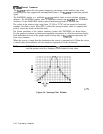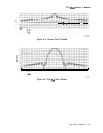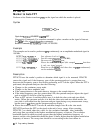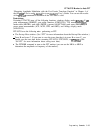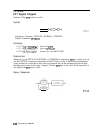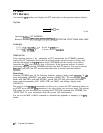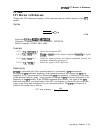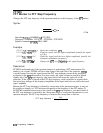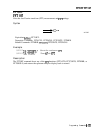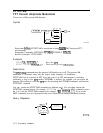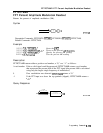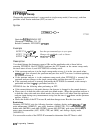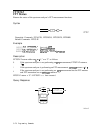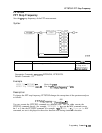
FFTMS
FFT Marker to FFT Stop Frequency
Changes the FFT stop frequency of the spectrum analyzer to the frequency of the
FFI
marker.
Syntax
FFTMS
Equivalent Softkey: MARKER
-?
FFT STOP.
Prerequisite Commands: FFTAUTO, FFTSNGLS, FFTCONTS.
Related Commands:
FFI’MM,
MKA, MKF.
Example
OUTPUT
718;"FFTCONTS;"
Starts the continuous
FIT
OUTPUT
718;"MKPK
HI;"
Finds the signal with the highest amplitude (usually the signal
at 0 Hz).
OUTPUT
718;"MKPK
NH;"
Finds the signal with the next highest amplitude (usually the
dominant modulation frequency).
OUTPUT
718."FFTMS-"
,
9
Changes the
FFT
stop
frequerxy
to the signal frequency.
Description
FFTMS is performed only if the spectrum analyzer is performing a FFT measurement. If a
marker is on a signal, FFTMS will move that signal to the right side of the graticule.
FFI’MS
is useful because moving the signal toward the FFT stop frequency increases the frequency
resolution of the
FF”I’
measurement. For best results, the signal of interest should be placed
slightly left of the
FFI’
stop frequency (the signal should not touch the right side of the
graticule). If the signal is placed at the FFT stop frequency, small variations in acquired data
can cause large changes in the displayed amplitude of the signal which do not reflect the actual
signal amplitude.
Because the FFT stop frequency is limited by sweep time of the spectrum analyzer, it may not
be possible to change the FFT midscreen frequency to the frequency of the FFT marker. If
the FFTMS command does not move the signal to the
FYI’
stop frequency, you should check if
the FFT stop frequency is limited by the sweep time range or sweep time increments for your
spectrum analyzer. The FFT stop frequency is related to the sweep time as follows:
FFT stop frequency =
400
(Sweep time x 2)
5-170
Programming Commands



